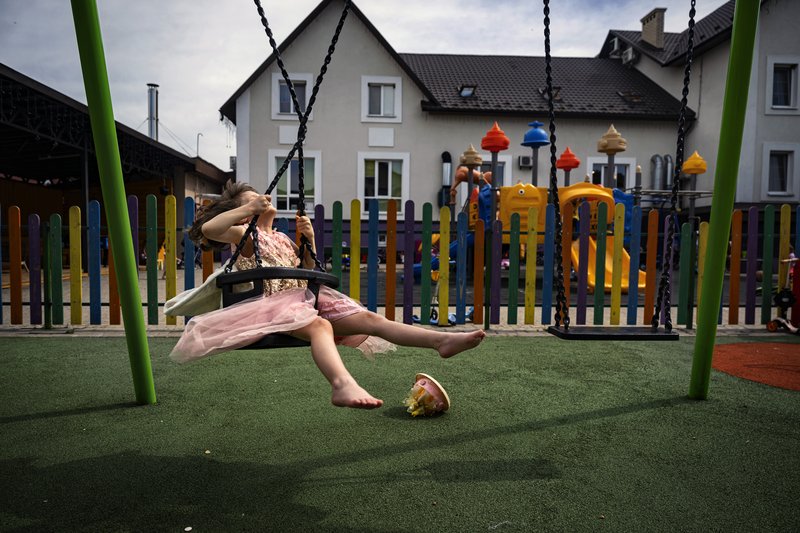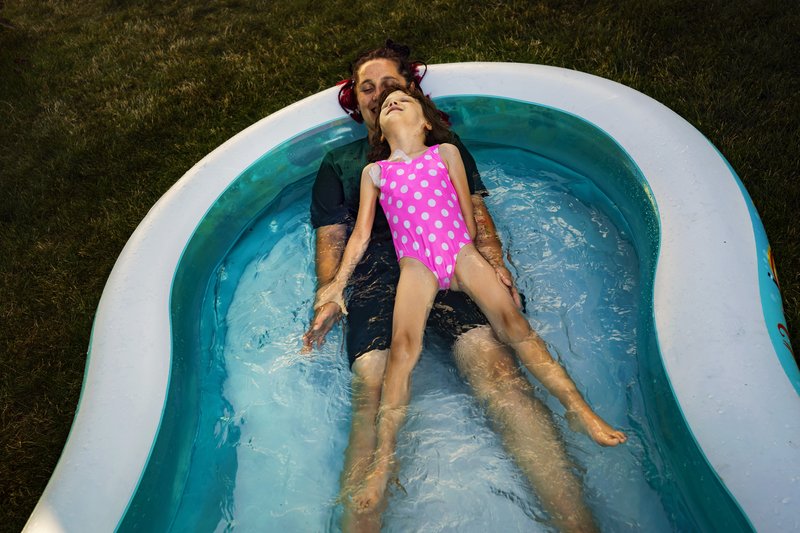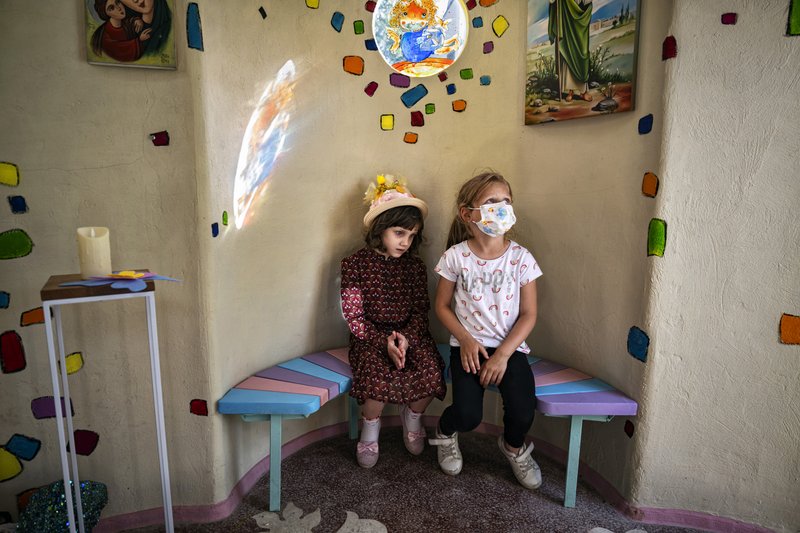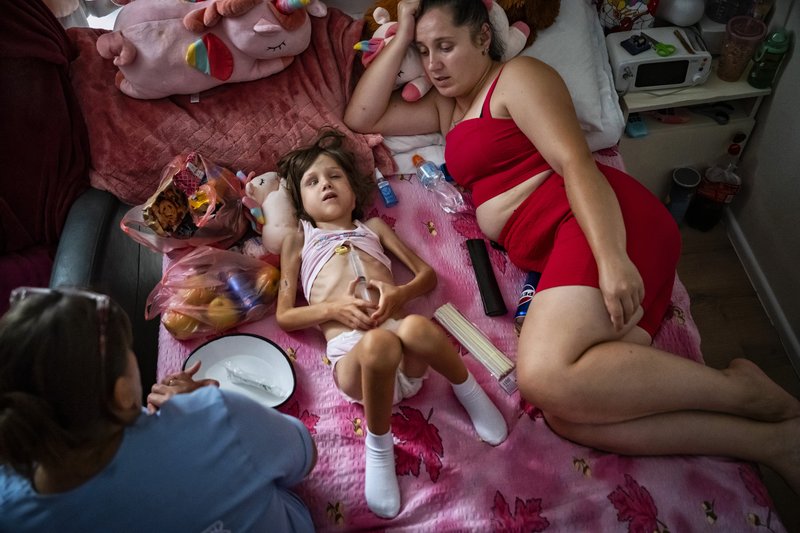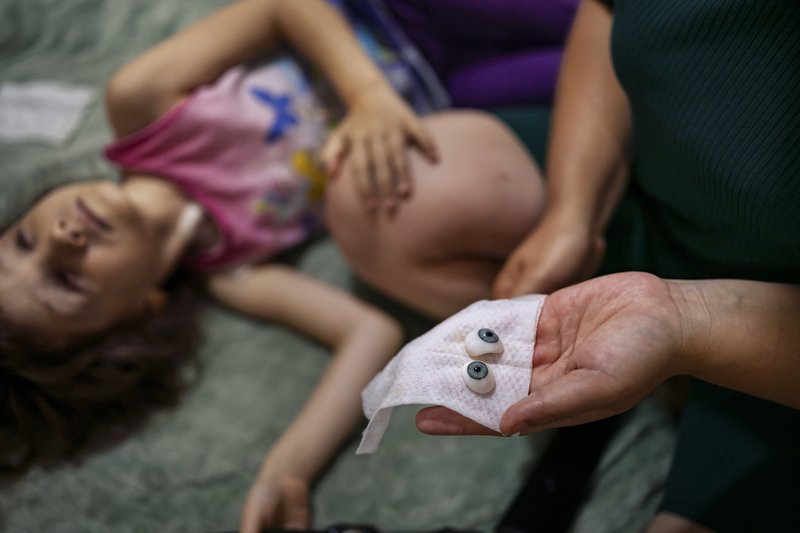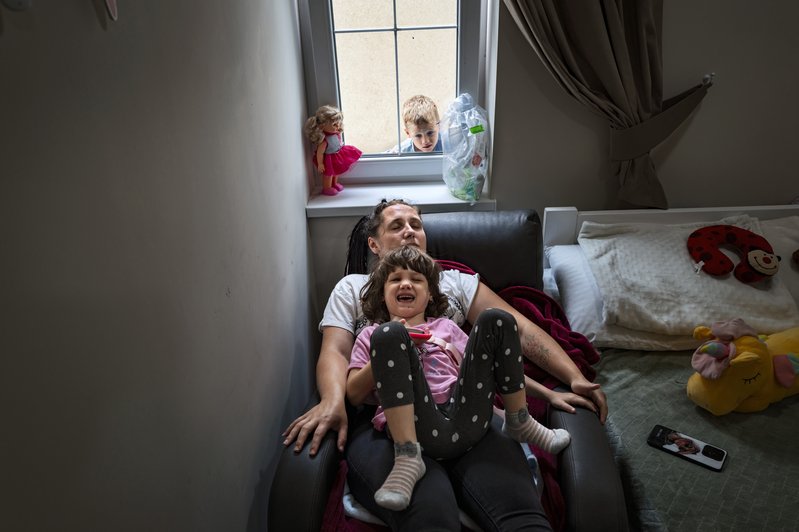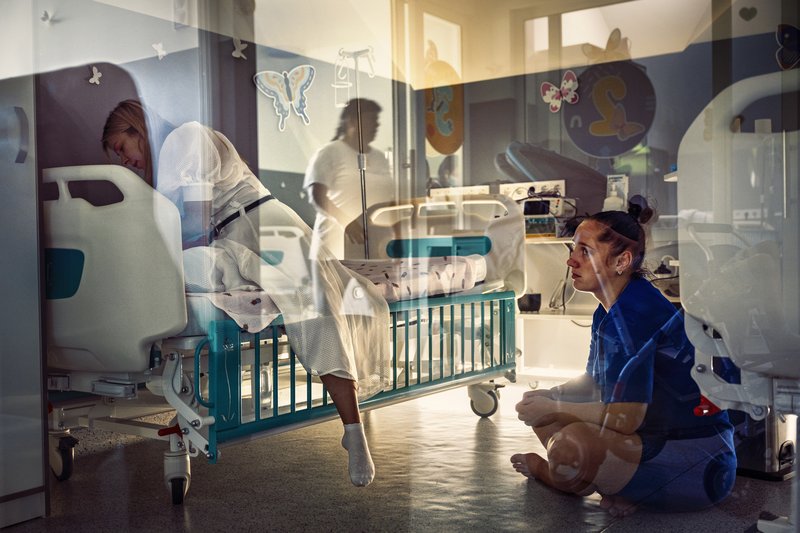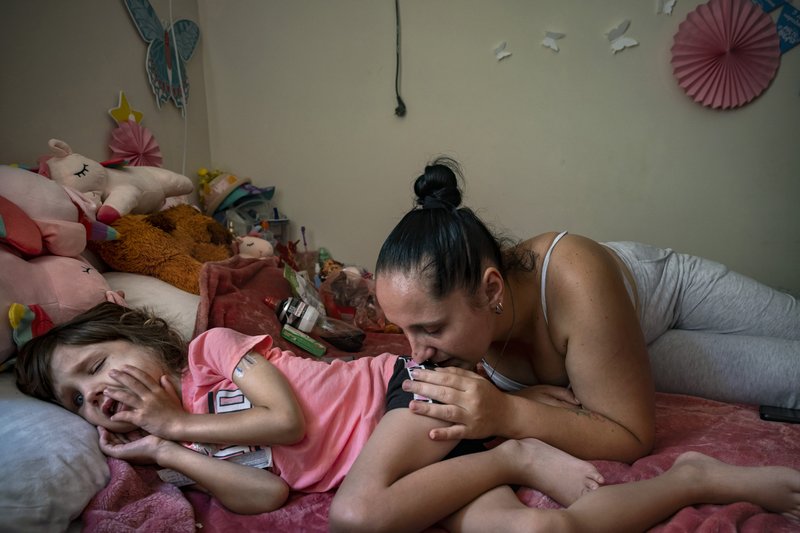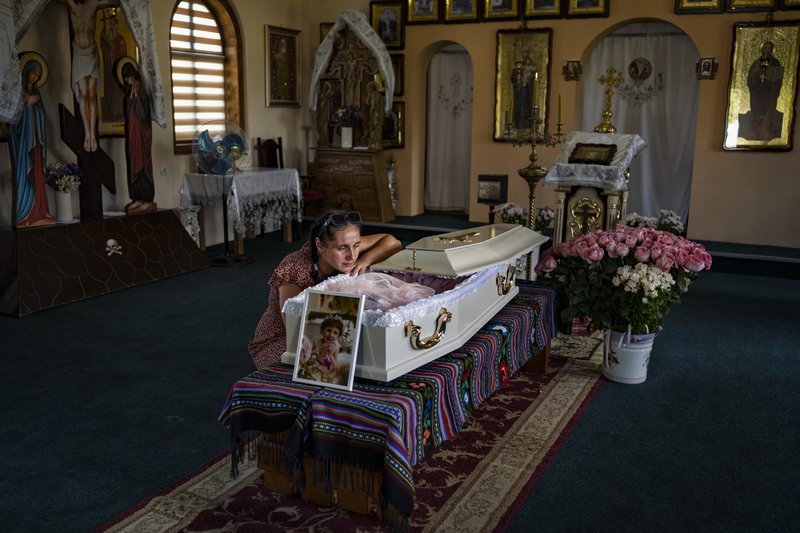Finalist: 'Mom. I Want to Live': A Young Girl Battles War and Cancer
Ukraine War; two year anniversary; children
Sonya Kryvolapchuk, 5, swings in the playground at the City of Goodness in Chernivtsi, Western Ukraine, June 19, 2024. Sonya lives mostly in isolation with her mother due to her weakened immune system from metastasis of Retinoblastoma, a rare eye cancer. Sonya was diagnosed with Retinoblastoma in 2020; she was 2 years old. Over the next 16 months, Sonya completed more than a dozen courses of chemotherapy and 25 sessions of radiation. She was scheduled to have another round of chemotherapy in Kyiv at the Ohmatdyt Hospital on February 27, 2022, three days after the start of Russia’s full-scale invasion of Ukraine when she and her mother, Natalia, were diverted instead to Poland, where Sonya received many diagnostic tests, but no additional treatment. By the time her mother decided to return to Ukraine for another attempt at chemo, her cancer had spread throughout her body. Since her initial diagnosis, she has lost both eyes and is totally blind, and in mid-May 2024, doctors gave her only days to live. She is also accompanied by her 6-year-old sister, Valeria Liakh, and her brother, Sasha, 4. Two years into Russia’s full-scale invasion of Ukraine, families with children suffering from severe illnesses have struggled to navigate the complexities of care in the throes of a war. (Credit: Lynsey Addario for The New York Times) Sonya Liakh was diagnosed with Retinoblastoma, a rare eye cancer, in 2020, when she was 2 years old. Over the next 16 months, she completed more than a dozen courses of chemotherapy and 25 sessions of radiation. She was scheduled to have another round of chemotherapy in Kyiv at the Ohmatdyt Hospital on February 27, 2022, three days after Russia launched its full-scale invasion of Ukraine. Sonya and her mother, Natalia, were evacuated to Poland along with other urgent medical evacuees, and Sonya’s chemotherapy was delayed by almost six months. By the time Sonya and her mother, Natalia, returned to Ukraine, cancer had spread throughout Sonya’s body. This is the story of a young girl’s tenacious battle with a normally curable type of eye cancer as she lives out her final months of life as the family—like so many others in war-torn Ukraine-- struggled to navigate the complexities of medical care in the throes of a war and upheaval. What (if any) is your connection to the story/region/people(s) being photographed? For example, perhaps you are part of the community, you live in the region or you have a personal interest in the subject. While I am not Ukrainian, I first travelled to Ukraine in 2015 to document how Ukrainian children were affected by Russia’s aggression in Donbas, where I followed an 11-year-old boy, Oleg, after he had been displaced from his village by fighting, and forced to start a new life outside of the grayzone. I returned to Ukraine in mid-February 2022, before Russia’s full-scale invasion, and have covered the war consistently over the past three years, making over a dozen trips, with a particular focus on how women and children have been affected by the war.
Lynsey Addario
